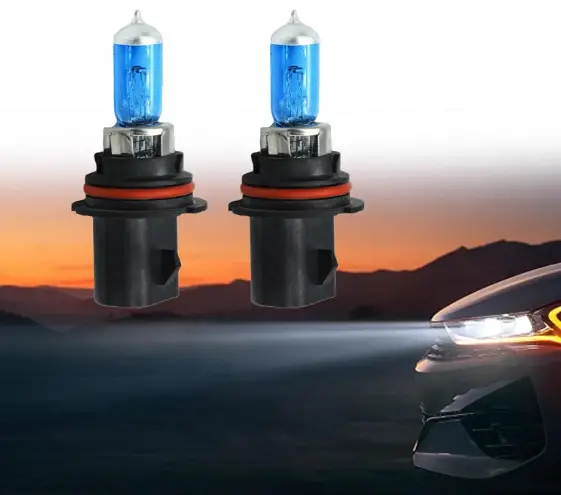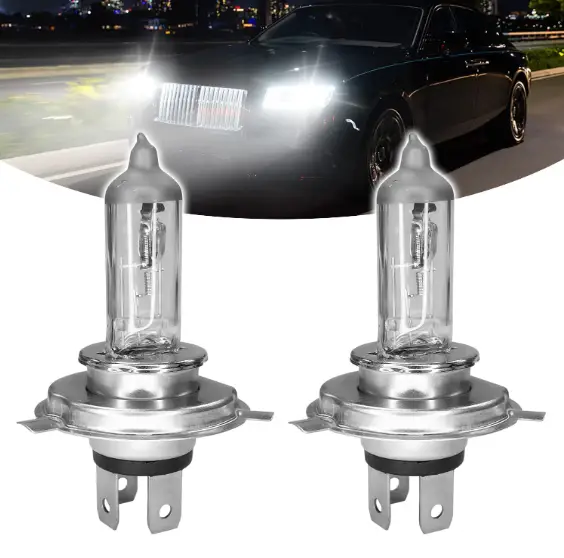To choose the right headlight bulb for your car, check your vehicle’s manual for the recommended type. Common options include halogen, HID, and LED, each offering different brightness and lifespan. Consider your needs, budget, and compatibility before purchasing.
Headlights are crucial components of any vehicle, ensuring clear visibility during nighttime driving and in poor weather conditions. However, when one of your headlights burns out or starts dimming, the question arises: “What headlight bulb do I need for my car?” In this blog post, we will explore the types of headlight bulbs available, how to choose the right one for your vehicle, and answer some frequently asked questions about car headlights.

Contents
Types of Headlight Bulbs
Before we dive into the specific process of choosing the right bulb, it’s important to understand the different types of headlight bulbs available on the market. Each type has its pros and cons, which affect brightness, longevity, and energy efficiency.
1. Halogen Bulbs
Halogen bulbs are the most commonly used headlight bulbs and have been the standard for many years. These bulbs contain a tungsten filament and are filled with halogen gas. When the filament heats up, it produces a bright light.
Pros:
- Affordability: Halogen bulbs are generally the most budget-friendly option.
- Widespread Availability: They are easy to find and compatible with most vehicles.
- Simple to Replace: Their installation process is straightforward, making them user-friendly.
Cons:
- Lower Brightness: Halogen bulbs produce less light compared to other types of bulbs.
- Shorter Lifespan: They tend to burn out more quickly than other options.
- Higher Energy Consumption: These bulbs use more power than newer technologies like LED or HID.
2. HID (High-Intensity Discharge) Bulbs
HID bulbs, also known as xenon bulbs, are gas-discharge lamps that produce light by creating an electrical arc between two electrodes, inside a glass bulb filled with xenon gas.
Pros:
- Brighter Light Output: HID bulbs are significantly brighter than halogen bulbs.
- Longer Lifespan: They last longer than halogen bulbs, offering greater longevity.
- Efficient Energy Use: These bulbs consume less power for the amount of light they produce.
Cons:
- Higher Cost: HID bulbs are more expensive than halogen bulbs, both for the initial purchase and for replacement.
- Glare for Oncoming Traffic: Because of their brightness, improperly installed or aligned HID bulbs can cause glare for other drivers.
- Longer Warm-Up Time: HID bulbs may take a few seconds to reach full brightness.
3. LED (Light Emitting Diode) Bulbs
LED headlight bulbs are becoming increasingly popular due to their energy efficiency and brightness. They use semiconductors to produce light and are highly efficient compared to halogen or HID options.
Pros:
- Superior Energy Efficiency: LED bulbs consume significantly less power.
- Long Lifespan: They are durable and can last for years without needing replacement.
- Bright and Focused Light: LED bulbs provide a more concentrated beam of light, improving nighttime visibility.
Cons:
- Higher Upfront Cost: LEDs tend to be more expensive than halogen bulbs, but the cost is usually offset by their longer lifespan.
- Compatibility Issues: Some older cars may not be compatible with LED bulbs without modification.
4. Laser Headlights
Laser headlights are the latest and most advanced technology, typically found in high-end luxury vehicles. They use laser diodes to produce extremely bright light.
Pros:
- Exceptional Brightness: Laser headlights can illuminate far distances, making them the brightest option available.
- Energy Efficiency: Despite their brightness, laser headlights consume minimal power.
- Long Lifespan: These headlights last significantly longer than any other type.
Cons:
- Extremely High Cost: Laser headlights are the most expensive option and are often reserved for luxury cars.
- Complex Installation: If your car doesn’t come with laser headlights, retrofitting them can be complex and expensive.
How to Choose the Right Headlight Bulb for the Car
When choosing the right headlight bulb, several factors should be considered to ensure you make the best decision for your vehicle’s needs.
1. Check Your Car’s Manual
The first and most important step is to check your car’s owner’s manual. The manual will specify the correct type of bulb your vehicle uses, including the size and wattage requirements. Some vehicles also specify whether they are compatible with HID or LED bulbs.
2. Determine Preferred Light Output
Different bulbs offer varying degrees of brightness. If you do a lot of night driving, or drive in areas with low street lighting, you may want to opt for brighter bulbs like HIDs or LEDs. On the other hand, halogen bulbs can still provide sufficient light for regular city or suburban driving.
3. Consider Your Budget
Price plays an important role in choosing headlight bulbs. Halogen bulbs are generally the least expensive, while HID and LED options can be pricier. Keep in mind that while more expensive bulbs like LED and HID might have a higher initial cost, they often offer longer lifespans, potentially saving you money in the long run.
4. Evaluate Energy Consumption
If you’re concerned about energy usage, especially if you have an electric or hybrid car, LED bulbs are your best bet. They use significantly less energy than halogen or HID bulbs.
5. Installation and Compatibility
Ensure that the bulbs you choose are compatible with your car’s headlight housing and electrical system. Some older vehicles may not support LED or HID lights without additional modifications, such as adding ballasts or resistors.
6. Legality and Road Safety
Some brighter bulbs, especially aftermarket HID and LED conversions, can cause glare and may not be legal in all areas. Check your local laws before installing bulbs to ensure they meet road safety requirements.

Headlight Maintenance Tips
Once you’ve selected and installed the right bulb for your car, it’s essential to maintain your headlights to ensure maximum performance and safety.
1. Regular Cleaning
Headlights can accumulate dirt, dust, and grime over time, reducing their effectiveness. Make it a habit to clean your headlights regularly using a soft cloth and a mild cleaner.
2. Headlight Alignment
Misaligned headlights can reduce visibility and cause glare for oncoming drivers. After installing new bulbs, check that your headlights are correctly aligned. Most auto repair shops offer headlight alignment services if needed.
3. Replace Bulbs in Pairs
If one headlight bulb burns out, it’s a good idea to replace both at the same time. This ensures even brightness and color temperature between the two headlights, and you won’t have to worry about the other bulb burning out soon after.
Frequently Asked Questions
Here are some FAQs about choosing car headlight –
1. What type of headlight bulb lasts the longest?
LED bulbs typically have the longest lifespan, lasting up to 50,000 hours in some cases. HID bulbs also offer good longevity but are generally not as long-lasting as LEDs. Halogen bulbs have the shortest lifespan and usually need to be replaced every 500-1,000 hours of use.
2. Can I replace my halogen headlights with LED or HID bulbs?
In many cases, you can upgrade to LED or HID bulbs, but you may need additional components like ballasts (for HIDs) or resistors (for LEDs) to make them compatible with your vehicle’s electrical system. Always check your car’s manual or consult with a professional before making the switch.
3. How do I know when to replace my headlight bulbs?
The most obvious sign is dimming or complete failure of the bulb. However, if you notice that your headlights are less effective at illuminating the road, even if they haven’t burned out, it may be time to replace headlight bulb. Additionally, if one bulb burns out, the other may soon follow, so consider replacing both.
4. Are brighter headlights always better?
Brighter headlights, like HID or LED bulbs, can improve visibility, especially on poorly lit roads. However, they can also cause glare for other drivers if they are not properly installed or aligned. It’s important to choose a bulb that provides enough light without compromising road safety.
5. Why do my headlights appear foggy or yellowed?
Headlight lenses can become foggy or yellowed due to oxidation from exposure to sunlight and the elements. This reduces the effectiveness of your headlights. You can restore clarity by using a headlight restoration kit or by having them professionally cleaned.
Conclusion
Choosing the right headlight bulb for your car is essential for ensuring optimal visibility and safety on the road. By understanding the different types of bulbs available and considering factors such as brightness, lifespan, and compatibility, you can make an informed decision that best suits your needs. Whether you opt for affordable halogen bulbs or invest in high-tech LEDs or HIDs, maintaining your headlights through regular cleaning and proper installation is key to safe driving at night or in adverse weather conditions.